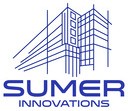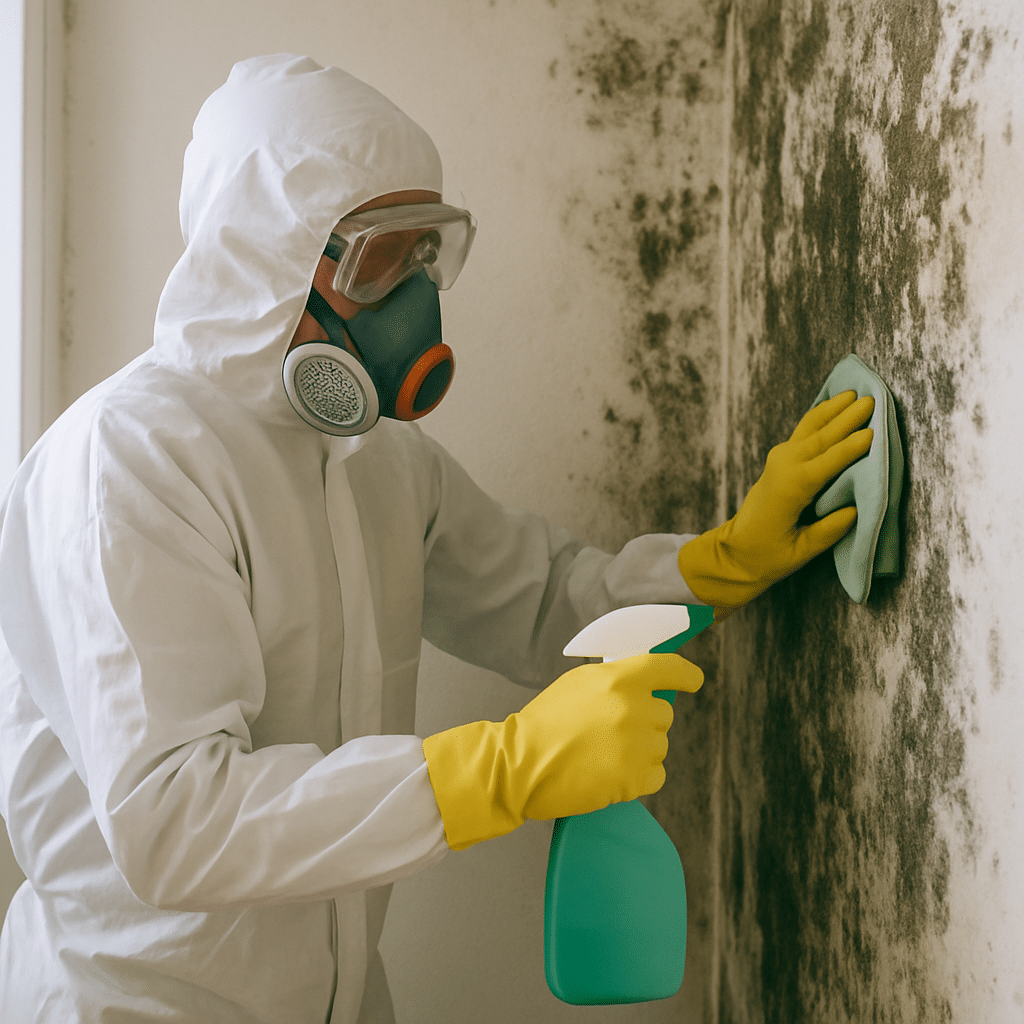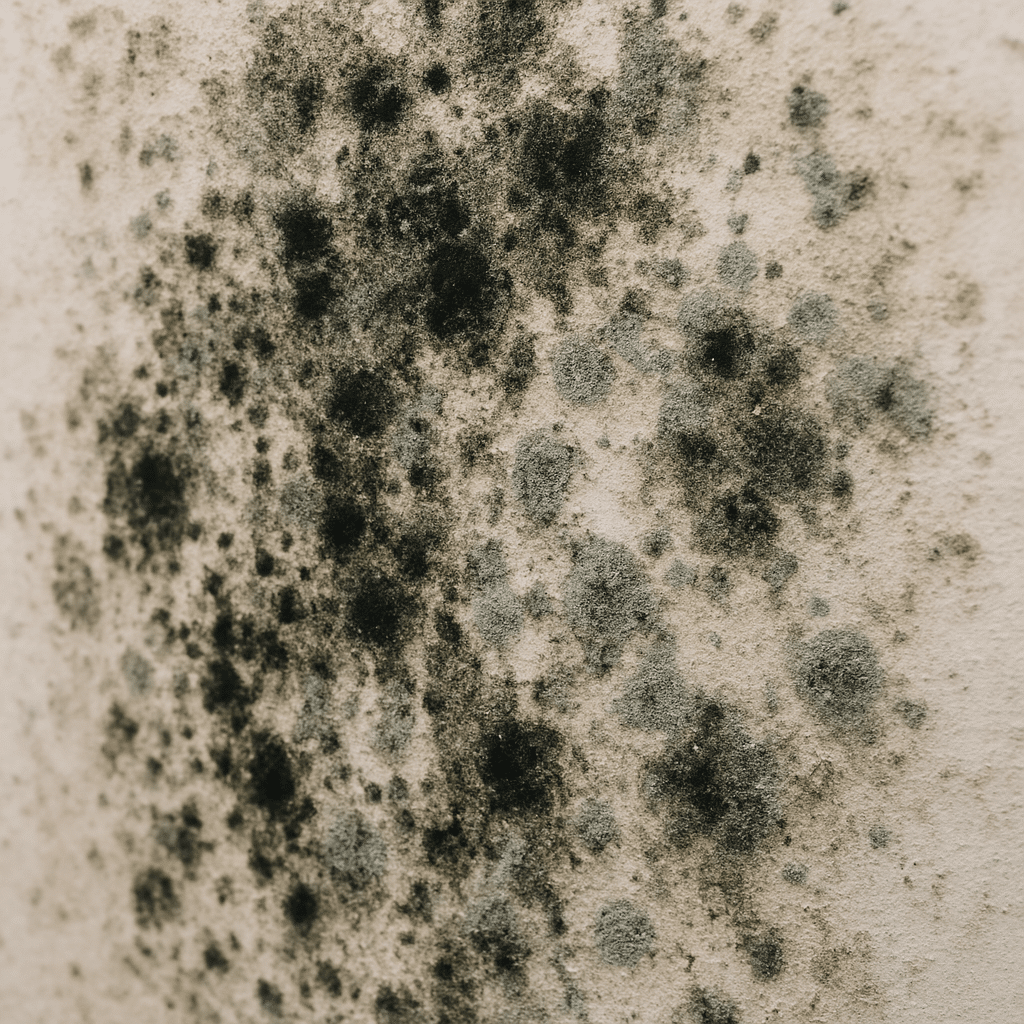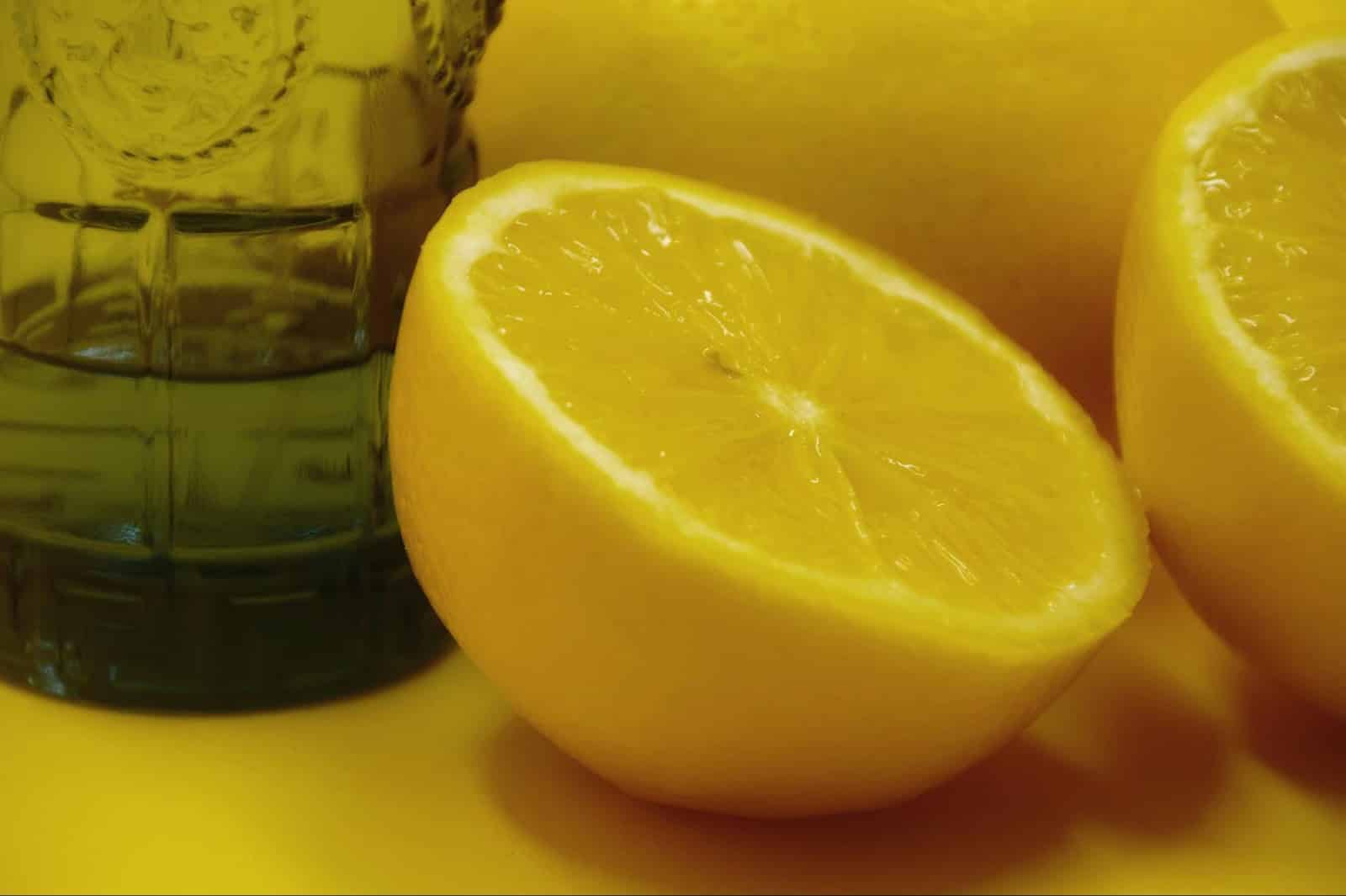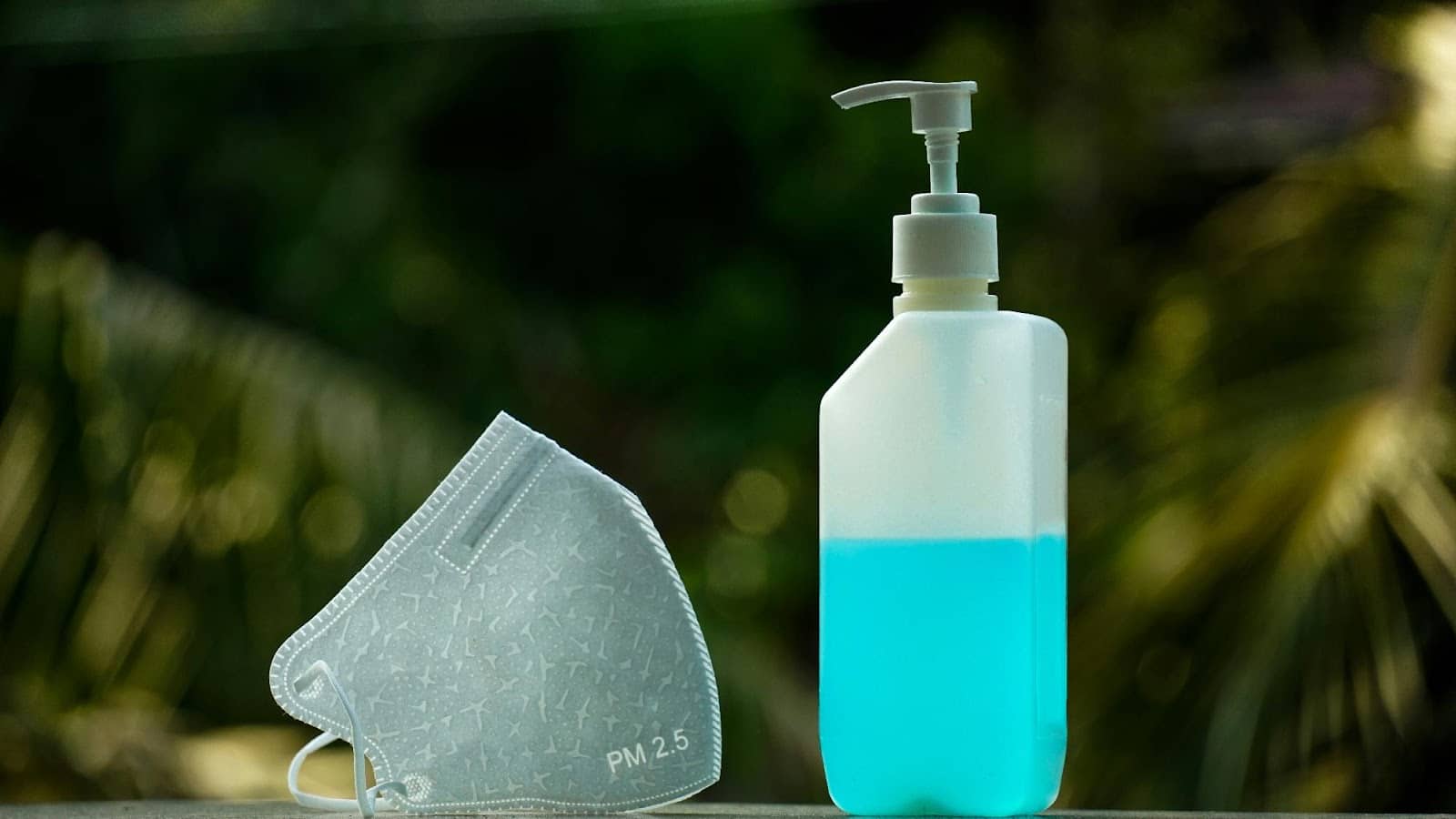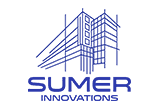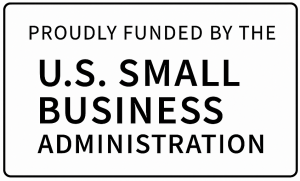Mold is a common household problem that can lead to health issues and property damage. Addressing mold promptly is crucial for maintaining a healthy home environment.
Natural mold removal methods are gaining popularity due to their safety and eco-friendliness. These solutions often use everyday items like vinegar and baking soda.
Chemical mold cleaners are also available and can be effective, but they require careful handling. Understanding the pros and cons of each method is essential for effective mold management.
This guide will explore the best natural and chemical solutions for eliminating household mold. Discover practical tips and product recommendations for safe and effective mold removal.
Understanding Household Mold: Risks and Causes
Mold thrives in damp, dark spaces, making bathrooms and basements prime locations. It can also grow behind walls and under floors, where it remains hidden.
Exposure to mold can cause allergic reactions and respiratory issues, particularly in sensitive individuals. Common symptoms include sneezing, coughing, and skin irritation.
Understanding mold’s causes is crucial for prevention. Mold often results from uncontrolled moisture, poor ventilation, or leaks. Addressing these issues quickly can prevent mold growth.
Common Causes of Mold Growth:
- High humidity levels
- Water leaks or flooding
- Condensation from poor insulation
- Inadequate ventilation
Regular inspections help in detecting mold early, thus preventing extensive damage. By controlling moisture and ensuring proper ventilation, you can effectively reduce the risk of mold infestations.
Essential Safety Precautions for Mold Removal
Handling mold requires taking serious safety measures to protect your health. Mold removal can release spores, which are hazardous to inhale.
Wearing protective gear is crucial. Equip yourself with a mask, gloves, and goggles to prevent direct contact with mold. Make sure to choose gear that is certified for safety.
Ensure the workspace is properly ventilated. This step helps to reduce inhalation risks and limits mold spore spread. Use fans or open windows to improve airflow.
Safety Gear Checklist:
- N95 or higher-grade mask
- Rubber or latex gloves
- Safety goggles
- Protective clothing
Be aware of signs of mold presence and limit exposure time in heavily contaminated areas. Always follow safety instructions on mold removal products for effective and safe cleanup.
Best Natural Mold Solutions for Your Home
Natural mold solutions are gaining popularity. They are effective and gentle on the environment, offering a safer alternative to harsh chemicals.
Vinegar is a top choice among natural mold removers. Its acidity is highly effective at killing mold spores on non-porous surfaces.
Another common household item, baking soda, helps to not only remove mold but also deodorizes and absorbs moisture from the air.
Hydrogen peroxide is often used in eco-friendly mold removal. It is non-toxic and can kill mold on both porous and non-porous surfaces.
These natural solutions can be used individually or in combination for better results. Mixing these ingredients often creates powerful mold-fighting solutions.
Popular Natural Mold Solutions:
- Vinegar
- Baking soda
- Hydrogen peroxide
Additionally, essential oils such as tea tree oil and lemon oil have natural antifungal properties, proving useful in mold removal.
Using natural cleaners not only mitigates health risks but is also cost-effective. Most ingredients are already available in your pantry.
In many cases, natural solutions are sufficient. For persistent mold, however, a combination with other methods may be necessary.
by Bernd 📷 Dittrich (https://unsplash.com/@hdbernd)
Vinegar for Mold Removal
Vinegar stands out as a powerful natural cleaner. Its acidity disrupts mold growth, effectively combating spores on numerous surfaces.
To use vinegar, pour it undiluted into a spray bottle. Apply it directly onto mold-infested surfaces and let it sit for one hour.
Afterward, scrub the area with a brush, then rinse with water. Repeat the process as necessary for stubborn spots.
How to Use Vinegar:
- Fill spray bottle with undiluted vinegar
- Spray on mold
- Scrub after one hour
Vinegar not only kills mold but also helps in mold prevention. Regular application in prone areas reduces recurrence.
Baking Soda Mold Removal
Baking soda is another trusted household mold solution. It is mild yet effective, making it safe for various surfaces.
Mix baking soda with water to create a paste. Apply this paste on mold-affected areas and scrub it using a brush.
Let it dry, then rinse it off. Baking soda not only eliminates mold but helps control moisture, deterring new mold.
Steps for Baking Soda Paste:
- Mix baking soda with water
- Apply paste on mold
- Scrub and rinse
Baking soda also works as a deodorizer, leaving treated areas fresh. It is a simple yet powerful remedy.
Hydrogen Peroxide Mold Cleaner
Hydrogen peroxide is a potent antifungal. It eradicates mold without emitting harmful fumes, making it a great home use option.
Use hydrogen peroxide at a 3% concentration. Simply spray it on moldy surfaces, let it sit, and wipe with a cloth.
Hydrogen peroxide foams upon contact with mold, breaking up growth and facilitating removal.
Instructions for Hydrogen Peroxide:
- Spray 3% solution
- Allow to sit
- Wipe clean
Thanks to its ease of use, hydrogen peroxide is favored in eco-friendly mold control routines.
Other Natural Mold Cleaners (Tea Tree Oil, Essential Oils, Lemons)
Natural oils like tea tree and lemon essential oils have antifungal properties. They are effective and pleasantly aromatic.
Mix a teaspoon of tea tree oil with water and spray it on affected areas. Do not rinse; let it dry completely.
Lemon juice is also a natural mold cleaner. Apply freshly squeezed lemon juice and scrub the area for a fresh scent and clean surface.
Natural Oils and Citrus for Mold:
- Tea tree oil solution
- Lemon juice scrub
These natural oils and lemon juice not only tackle mold but also leave the air fresh and inviting.
by Bruno Brikmanis-Jurjans (https://unsplash.com/@bbj19)
Chemical Mold Cleaners: When and How to Use Them Safely
Chemical mold cleaners can be very effective. They are typically used for severe mold infestations or when natural solutions fall short.
Before using chemical cleaners, read all safety instructions. Proper precautions can prevent health risks during the mold removal process.
Ensure the area is well-ventilated and wear protective gear such as gloves and masks. This minimizes exposure to harmful fumes or skin contact.
Safety Gear for Chemical Use:
- Gloves
- Masks
- Goggles
Remember, some surfaces require specific chemical cleaners. Not all products are suitable for every material, especially porous ones.
In severe cases, a combination of chemical and natural methods may be necessary. This approach combines efficacy with environmental safety.
by Lino Jacob (https://unsplash.com/@linojacobphotography)
Bleach for Mold: Pros, Cons, and Best Practices
Bleach is a common household mold cleaner. It is powerful but has limitations, especially on porous surfaces where mold roots deeply.
Bleach can effectively kill surface mold. However, its fumes can be harsh, necessitating careful application and protective gear.
Bleach Mold Cleaning Steps:
- Mix bleach with water
- Apply with a sponge
- Rinse thoroughly
Bleach is best for non-porous materials like tiles and glass. Use it sparingly and with caution to avoid potential health risks.
Commercial Mold Removal Sprays and Products
Commercial mold sprays offer convenience. These products often come pre-mixed and are designed for specific surfaces like wood and tile.
Choosing the right commercial product requires reading labels and reviews to find effective options with lower toxicity levels.
Key Features of Commercial Sprays:
- Surface-specific
- Ready-to-use
- Variable toxicity
While convenient, ensure you opt for sprays with minimal environmental impact. Eco-friendly options are now available without compromising effectiveness.
Mold Removal Tips: Step-by-Step Guide
Efficient mold removal requires a systematic approach. Begin by assessing the extent of the mold spread and identifying the moisture source.
Once identified, gather necessary tools and protective gear. This ensures a safe and thorough cleaning process.
Key Steps for Mold Removal:
- Wear protective gear (masks, gloves, goggles)
- Ventilate the area well
- Contain the area to prevent spore spread
Next, select an appropriate cleaning method. Natural solutions are suitable for smaller infestations, while chemicals handle more extensive issues.
After applying your chosen cleaner, scrub the affected surfaces thoroughly. Ensure you reach all crevices where mold may persist.
Cleaning Materials Needed:
- Scrub brush
- Mold cleaner (natural or chemical)
- HEPA vacuum for fine particles
Finally, dry the area completely. Moisture control is vital to prevent mold from returning.
After cleaning, follow up with regular inspections. Implement preventive measures like dehumidifiers or improved ventilation to keep mold at bay.
Mold Prevention Products and Home Strategies
Preventing mold is easier than dealing with a full-blown infestation. Properly maintaining your home environment can greatly reduce mold risks.
Start by addressing humidity levels. Keep indoor humidity below 60% to inhibit mold growth. This can be achieved using dehumidifiers and ensuring good ventilation in damp areas.
Effective Mold Prevention Products:
- Dehumidifiers
- Mold-resistant paint
- Moisture absorbers
Home maintenance is also crucial. Fix leaks immediately and ensure proper insulation to avoid condensation. Regularly clean areas prone to moisture, such as bathrooms and basements.
Implementing these strategies will help maintain a mold-free home and improve indoor air quality.
When to Call a Professional for Mold Remediation
Sometimes, handling mold on your own isn’t enough. If mold covers a large area or keeps returning, professional help is necessary.
Look for these signs to decide if it’s time to call an expert:
- Mold covers an area larger than 10 square feet
- Difficulty identifying the mold source
- Health symptoms are worsening due to mold exposure
Professional remediation ensures thorough removal and prevents future outbreaks, protecting your home’s health.
Frequently Asked Questions About Mold Removal
Mold removal can be challenging without clear guidance. Here, we address common concerns to help you tackle the problem effectively.
Questions to consider include:
- How can I tell if it’s mold or dirt?
- What materials can mold damage the most?
- Is it safe to stay in a mold-infested home?
These questions often arise and understanding them is key to successful mold management. Educate yourself on mold facts to create a healthier environment.
Conclusion: Choosing the Best Mold Eliminators for a Healthy Home
Mold removal requires a mix of natural and chemical solutions to ensure effectiveness. Choosing the right method depends on severity, safety, and preferences.
Both natural and chemical options have benefits and drawbacks. Prioritize solutions that offer safety, efficiency, and long-lasting results for a healthier living space.
